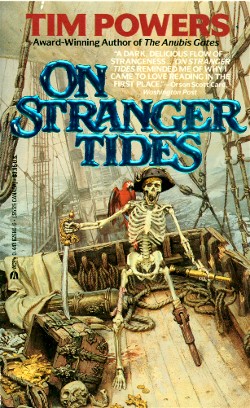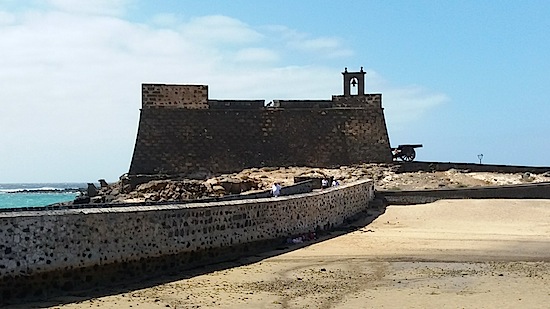 Extolling the virtues of Tim Powers to this audience is probably preaching to the choir, but if you haven’t yet read On Stranger Tides, get thee to Amazon. It was the first Powers I ever read. It’s still my favorite.
Extolling the virtues of Tim Powers to this audience is probably preaching to the choir, but if you haven’t yet read On Stranger Tides, get thee to Amazon. It was the first Powers I ever read. It’s still my favorite.
The fourth Pirates of the Caribbean movie, neither based nor inspired but rather “suggested by the novel by Tim Powers,” is so-so. It has a clumsy first act, full of cameos and nudge-nudge references to the original film; and the leaden action and fighting choreography is wound into slow-motion by the editing. The biggest problem is POV: the story shouldn’t have had Jack as the main character but rather should have, like Curse of the Black Pearl, focused on the straight man (here, the missionary Philip) whose path intersects with Sparrow’s. That said, it’s not as bad as some of the reviews say. I found the mermaid sequence in Whitecap Bay delightful and I’ll gladly pay $9 to watch Geoffrey Rush channel Robert Newton (or to listen to Penelope Cruz’s accent) anytime. The film’s biggest stars are actually the percussive guitars of Rodrigo Y Gabriela who, along with Hans Zimmer, give the score a Spanish Main emotion missing from the previous installments.
If only the filmmakers had adapted Powers whole cloth! In the 1987 novel, 18th-century puppeteer John Chandagnac — or Jack Shandy, as he becomes known — accidentally falls in with pirates and thereby enters a heretofore unknown world of sorcery and West African animism. The buccaneers of the Caribbean, it turns out, are magicians who can manipulate spirits. Blackbeard himself is a master warlock, but having become infested with vodun loas, must seek out the Fountain of Youth to banish them; he keeps them at bay by drinking gunpowder and burning slow matches in his hair. And he’s not even the main antagonist. Shandy must meanwhile race to save his love from a horrific plot involving zombies and body swapping.
…
Read More Read More




 Extolling the virtues of Tim Powers to this audience is probably preaching to the choir, but if you haven’t yet read On Stranger Tides, get thee to
Extolling the virtues of Tim Powers to this audience is probably preaching to the choir, but if you haven’t yet read On Stranger Tides, get thee to